Himalayas Program
More than 30 Years in the Heart of the Himalayas.
NEWS: Our Medicinal & Aromatic Plants Program Recognized as “2019 Outstanding Practice in Agroecology”!
(Press release here.)
The Mountain Institute’s programs in Asia started in the mid-1980’s with the “Heart of the Himalayas” initiative. During this pioneering project we established our signature, collaborative approach to community-based project design. TMI helped establish two protected areas: the Makalu-Barun National Park in Nepal and the Qomolangma (Mt. Everest) Nature Preserve in the Tibet Autonomous Region of China. This was achieved by working hand-in-hand with local, mountain communities and fostering trusting, productive relationships between these communities and park managers. Our community-based approach has since become the cornerstone of our regional programs.Our broad impact over three decades has conserved fragile ecosystems, helped preserved ancient cultures and has fostered sustainable livelihoods in remote mountain communities. Highlights include producing the first Sherpa language dictionary, restoring Pangboche Monestary, and hosting international exchanges on climate change adaptation between Nepali and Peruvian scientists, communities and policy makers. In partnership with the United Nations World Food Programme, we distributed more than 15,000 metric tons of food to food-scarce areas of western Nepal. TMI also helped establish more than 140 reforestation nurseries in Nepal, India and the Tibet Autonomous Region of China along with more than 400 Community Forest User Groups in Nepal.
Since the 2015 earthquakes in Nepal, TMI has worked with local partners to provide immediate relief and long-term rebuilding of both structures and livelihoods in three of the highest, most remote and worst affected districts. At present, TMI-Himalayas’ largest initiative is the Medicinal and Aromatic Plants (MAPs) Program. Since 2001 we have trained more than 18,000 farmers to cultivate, harvest and sell medicinal and aromatic plants in remote mountain districts of Nepal. This has helped lift many farmers and their families out of poverty.
Medicinal & Aromatic Plants Program brochure here.
Check out photo stories on our Exposure site.
Featured Projects
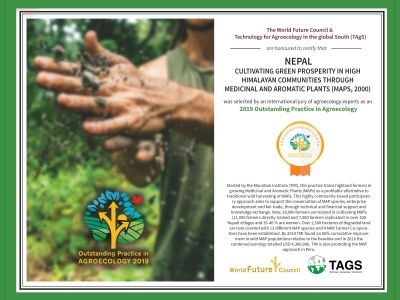
Medicinal & Aromatic Plants Program, Nepal
Link to full project description.
Link to new MAPs Program brochure.
Check out our blog: “High Poverty: Medicinal Plants Offer Way Forward for Nepal’s Mountain Communities.”
Link to MAPs video.
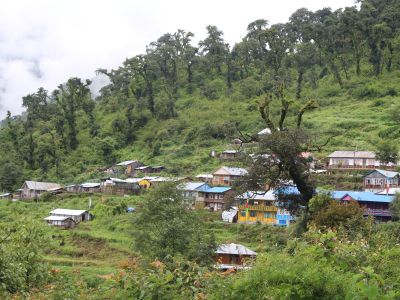
Scaling Up Mountain EbA in Nepal
Learn about recent field trips to Gongang and Tatopani villages.
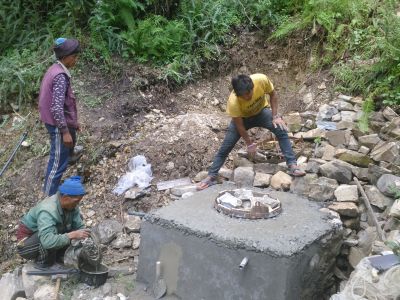
The Pragatishil Pahad Project (PPP)
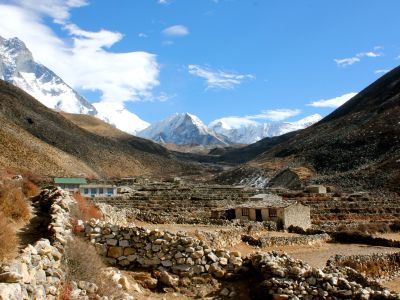
Relief Work after Nepal Quakes
Past Projects
-
 With help from the US Ambassador’s Fund for Cultural Preservation, The Mountain Institute worked with villagers to preserve the 11th century Drikung Kagyu Thubten Rinchenling Monastery in the remote village of Halji. The monastery and Halji village are the spiritual center of the Limi Valley in northwestern Nepal. Halji Gompa, one of the country’s oldest monasteries, faced annual threats of flooding from an upstream glacial lake. Working with the 88 households of Halji village, we were able to reduce flood risks through the construction of 288 meters of gabions (stone walls) and an additional 155 meters of dry wall, reinforced by some 2,000 sand bags. Native, deep-rooted shrubs were planted along the riverbank to prevent the rapid erosion that threatened to sweep the monastery away.
With help from the US Ambassador’s Fund for Cultural Preservation, The Mountain Institute worked with villagers to preserve the 11th century Drikung Kagyu Thubten Rinchenling Monastery in the remote village of Halji. The monastery and Halji village are the spiritual center of the Limi Valley in northwestern Nepal. Halji Gompa, one of the country’s oldest monasteries, faced annual threats of flooding from an upstream glacial lake. Working with the 88 households of Halji village, we were able to reduce flood risks through the construction of 288 meters of gabions (stone walls) and an additional 155 meters of dry wall, reinforced by some 2,000 sand bags. Native, deep-rooted shrubs were planted along the riverbank to prevent the rapid erosion that threatened to sweep the monastery away.
We were also able to restore the Monastery’s roof. Leakage had made the quarters below uninhabitable and damaged some of the ancient murals. The kitchen has also been renovated, along with many of the rooms in the monks’ quarters. This has greatly improved living conditions for this historic yet extremely isolated monastery. We produced promotional materials on the restoration work and handed these over to the community for future fund raising. -
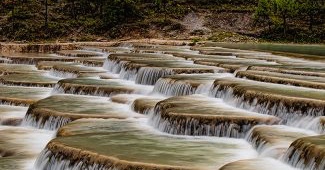 The Mountain Institute worked with communities in the Rodikot and Dharma watersheds of the remote Humla District in Nepal’s far west. The project was based on developing watershed user groups to oversee the sustainable management of two watersheds. Through these user groups, irrigation canals were constructed to improve water flow to agricultural land, hillsides were reforested and natural springs – sources of clean water for the communities – have been protected and improved. Our focus on building local capacity will continue to help locals respond to threats from climate change.
The Mountain Institute worked with communities in the Rodikot and Dharma watersheds of the remote Humla District in Nepal’s far west. The project was based on developing watershed user groups to oversee the sustainable management of two watersheds. Through these user groups, irrigation canals were constructed to improve water flow to agricultural land, hillsides were reforested and natural springs – sources of clean water for the communities – have been protected and improved. Our focus on building local capacity will continue to help locals respond to threats from climate change.
Villagers from eight of the areas most vulnerable to climate change within these watersheds participated developing “community-based adaptation plans of action” or “CAPAs”. The Watershed User Groups, which we strengthened in each of the villages, were represented by a committee of both women and men, and included members from the most marginalized socio-cultural group—-the Dalits or “untouchable” caste. The groups assessed their assets and vulnerabilities, and identified prospective solutions, adaptation strategies, and priority actions. Our work supported a priority action being implemented in each of the eight villages. Most activities focused on restoring springs and reducing risks from landslides. -
As part of the USAID-supported High Mountains Adaptation Partnership (HiMAP), The Mountain Institute conducted research on dangerous glacial lakes in Nepal. Much of our work was focused on Imja Lake – a rapidly growing glacial lake in the shadow of Mt. Everest that is considered to be one of the most dangerous in Nepal. Our research included bathymetric surveys to determine the size and growth of lakes, ground-penetrating radar surveys of terminal moraines (the natural dams that hold the lakes in) and modeling of various outburst scenarios to develop possible solutions. Through this project we set the standard for engaging local communities. Our research on these lakes was conducted in partnership with locals and knowledge was thoroughly shared and disseminated with them. For more information, visit the HiMAP website.
-
 The Mountain Institute restored the sixteenth century Pangboche Monastery located in the village of Pangboche – the highest permanent settlement on the trail to Mount Everest base camp. Pangboche Monastery is one of the oldest centers of Sherpa learning and culture and the restoration required a thorough understanding of local cultures and sensitivities. The restoration focused on the dilapidated courtyard of the monastery. In addition, The Mountain Institute developed interpretive posters and brochures to promote understanding of the monastery and its cultural importance for both locals and tourists.
The Mountain Institute restored the sixteenth century Pangboche Monastery located in the village of Pangboche – the highest permanent settlement on the trail to Mount Everest base camp. Pangboche Monastery is one of the oldest centers of Sherpa learning and culture and the restoration required a thorough understanding of local cultures and sensitivities. The restoration focused on the dilapidated courtyard of the monastery. In addition, The Mountain Institute developed interpretive posters and brochures to promote understanding of the monastery and its cultural importance for both locals and tourists. -
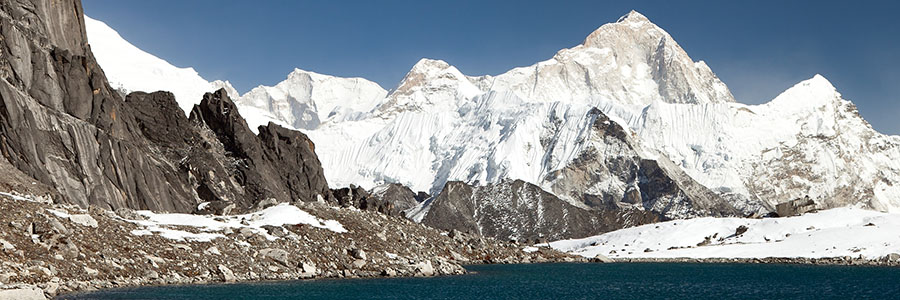 The Mountain Institute conducted community consultations over two years that resulted in the creation of the Makalu Barun National Park and Buffer Zone, a then new model for protected area management that integrated co-management of biodiversity resources between national parks authorities and local communities. This initiative brought together the Government of Nepal and 35,000 local people in the region to protect and sustain this globally significant protected area of 2,330 km2. TMI established park facilities, trained protected area staff, and handed over park management to qualified Government of Nepal personnel in 1999. In addition, from 1992 through 2002, TMI worked with local communities to conserve and restore over 60 cultural sites, provided training in natural resource and cultural conservation and management, and implemented community development, infrastructure projects, and income-generating programs. TMI also created and trained local institutions such as user groups, tourism associations, lodge management committees, and integrated conservation and culture heritage committees.
The Mountain Institute conducted community consultations over two years that resulted in the creation of the Makalu Barun National Park and Buffer Zone, a then new model for protected area management that integrated co-management of biodiversity resources between national parks authorities and local communities. This initiative brought together the Government of Nepal and 35,000 local people in the region to protect and sustain this globally significant protected area of 2,330 km2. TMI established park facilities, trained protected area staff, and handed over park management to qualified Government of Nepal personnel in 1999. In addition, from 1992 through 2002, TMI worked with local communities to conserve and restore over 60 cultural sites, provided training in natural resource and cultural conservation and management, and implemented community development, infrastructure projects, and income-generating programs. TMI also created and trained local institutions such as user groups, tourism associations, lodge management committees, and integrated conservation and culture heritage committees. -
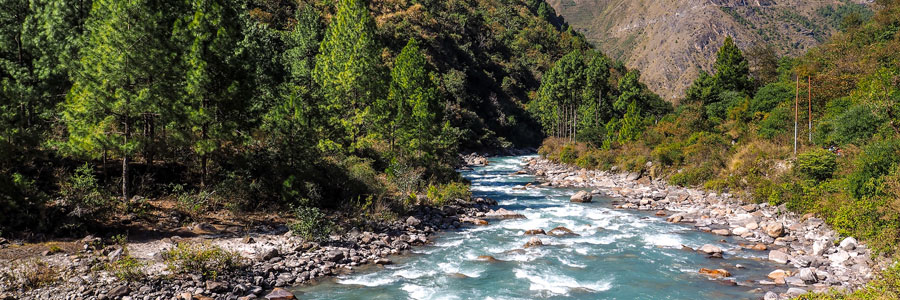 The Mountain Institute helped design a comprehensive community-managed eco-tourism plan for Langtang National Park. This plan established some of the first porter associations in Nepal, supported community managed lodge management committees to establish pricing and sanitation norms, and enhanced cooperation between villages along a significant tourism route. In addition, TMI helped create local committees to regulate use of sacred lakes and wetlands in the park visited by tourists and religious pilgrims.
The Mountain Institute helped design a comprehensive community-managed eco-tourism plan for Langtang National Park. This plan established some of the first porter associations in Nepal, supported community managed lodge management committees to establish pricing and sanitation norms, and enhanced cooperation between villages along a significant tourism route. In addition, TMI helped create local committees to regulate use of sacred lakes and wetlands in the park visited by tourists and religious pilgrims. -
 With the goal of better protecting the whole Mount Everest ecosystem The Mountain Institute helped the Government of the Tibetan Autonomous Region of China establish the Qomolangma National Nature Preserve in 1992. This initiative combined protected area management of 31,000 km2 with livelihood improvement for 90,000 local people using community-based approaches. TMI also helped develop co-management structures for the protected area by linking local communities with the government. Together, Qomonlangma National Nature Preserve, Makalu Barun National Park and Buffer Zone and Sagarmatha National Park protects a bi-national conservation landscape of over 38,000 km2.
With the goal of better protecting the whole Mount Everest ecosystem The Mountain Institute helped the Government of the Tibetan Autonomous Region of China establish the Qomolangma National Nature Preserve in 1992. This initiative combined protected area management of 31,000 km2 with livelihood improvement for 90,000 local people using community-based approaches. TMI also helped develop co-management structures for the protected area by linking local communities with the government. Together, Qomonlangma National Nature Preserve, Makalu Barun National Park and Buffer Zone and Sagarmatha National Park protects a bi-national conservation landscape of over 38,000 km2.
Success Stories
-
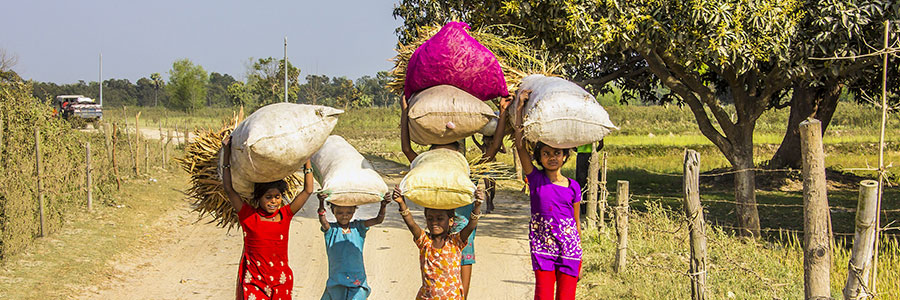
Food for Enterprise
TMI worked in partnership with the United Nations World Food Programme to provide food and community-development assistance to food insecure regions of Nepal. Since February 2008, TMI delivered over 13.6 million pounds of rice and lentils to over twenty thousand farming families in extremely remote villages affected by severe drought. In addition to the food, the communities worked on projects developed with TMI‘s assistance, including improvements to community schools and trails, community agriculture and irrigation projects, and water-driven gristmills. These projects met basic but critical needs, and helped create the foundations for community-driven enterprise.
By end of June 2010, TMI completed programs in over fifty village development committees, located mainly in the Humla, Mugu, Jumla and Dolpo districts. Food was used as currency in exchange for unskilled labor, helping families meet four months of their annual food needs.
Community projects completed include:
-Eleven agricultural land improvement projects covering 12 hectares
-Forty irrigation canal construction /improvement projects that irrigate 160 hectares of agricultural land
-Twenty-two trail improvement projects that improved over 30 kilometers of trails
-Forty school support programs
-Five community bridges
-Non-Timber Forest Products (NTFP) cultivation and conservation training to 1200 farmers
-Market study of medicinal and aromatic crops and other cash crops
-Farmer-to-farmer visits to east Nepal medicinal and aromatic crop sites
-Feasibility study and pilot on minimum tillage (Simikot)
-Support for distribution of micro-nutrient packets to children in all four districts (serving approximately 15,000 children under 60 months of age)
-
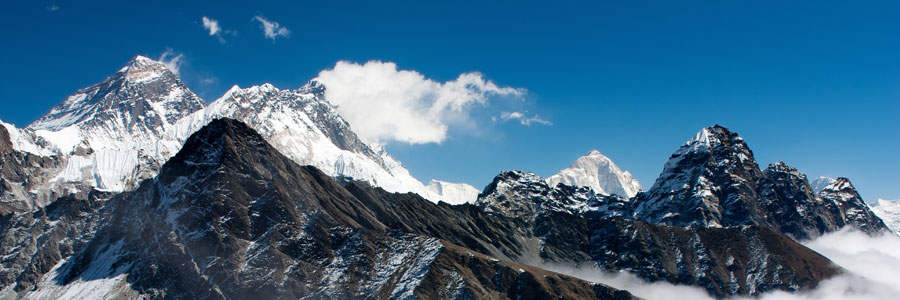
Alpine Conservation Restoration Project (Nepal, Peru, & Patagonia)
This project protected and restored alpine ecosystems. These ecosystems had been damaged by unregulated adventure tourism in Nepal (Mt. Everest National Park, Makalu-Barun National Park), Peru (Huascaran National Park), and Patagonia (Glaciers National Park). The impacts of the alpine restoration initiative to date included saving 500,000 km of fragile alpine shrub juniper per year. This rare species of juniper was formerly used as fuel by tourist lodges. Other successes included restoring high altitude ecosystems through better local stewardship and mobilizing the climbing and trekking communities worldwide to become better high altitude conservationists, and to donate their time and financial resources to protecting the landscape.
In 2009, an 80% increase in grass/herbaceous cover was measured at TMI‘s project site in the Huascaran National Park. This site had been decimated by cattle grazing, and was re-planted successfully when TMI helped villagers move cattle to improved pasture locations at lower elevations to avoid overgrazing. -
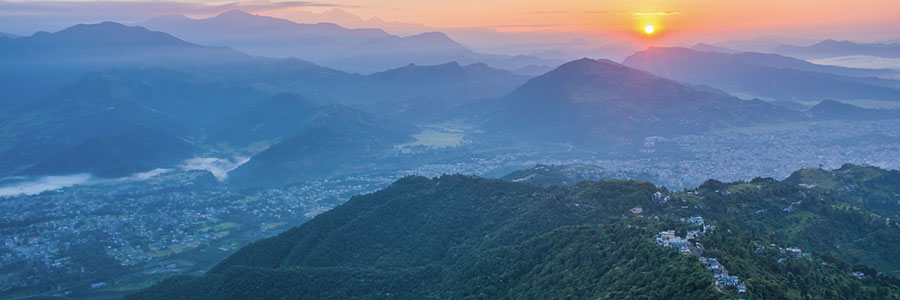
Building Livelihoods Along the Beyul Trails
This three-year project’s purpose was to spread the benefits of tourism more equitably among the local people in the Everest region of Nepal, while preserving indigenous culture and environment through education and awareness-building.
The goals of the Building Livelihoods initiative included:
- A plan to teach Sherpa language and script to 1,000 school children from Khumbu and Pharak.
- Reaching more than 20,000 tourists visiting Khumbu through cultural information in the interpretive displays, brochures and films.
- Making home-stays and cultural/ecological trekking available to more than 1,500 people in the target communities of Thame, Phortse, and Gyiphide.
- Training hundreds of households in off-the-trekking-route communities within the Thame Valley in Sagarmatha National Park in tourism/business enhancing practices.
- Extending training to residents of the Tate, Sengma, Lhawo and Gumela villages in the Pharak Buffer as well.
- Recruiting non-local individuals, such as middle class Nepali people, to work and visit in the Park.
- A Sherpa language dictionary was completed
- Several Sherpa folksongs were documented
- An interpretive exhibit at Sagarmatha National Park Visitors Center was installed
- A ritual arts exhibit at Kyarok Monastery was installed
- A visitor information center at Namche Monastery was created
- A Nepali-language version of the Beyul documentary film was produced
- Sherpa language educational resource materials were created
- Teachers were trained in the Sherpa language
- The Kathmandu International Film Festival (KIMFF) was founded
- A seven-day village tourism operators training was provided
- An interactive program on village tourism was created
- The Khumbu Mountain Center was constructed
- An income generation project was developed at Thame Monastery
- A Yak handicraft development training was held, along with a Yak handicraft production workshop
-
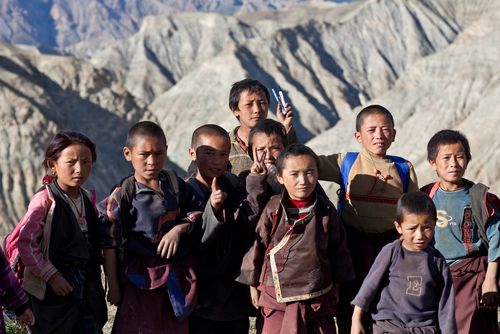
Tibet-China Program
The ethnic Tibetan areas of China presented difficult challenges to sustainable development because of their remoteness, environmental fragility, lack of social services, and fluid economic and political conditions. In response, TMI implemented the Tibetan Plateau Development Program (TPDP) in the Tibetan areas of China since 2004. Prior to this project, TMI ran the Peak Enterprise Program, the first private sector development initiative in Tibet’s history. In the late 1980s, TMI worked with local Tibetan authorities to form the Qomolangma (Everest) Nature Preserve on the Tibet side of Mt. Everest. After establishing the preserve, TMI worked to develop a bilateral agreement between the Dutch government and the PRC which created the Qomolangma (Everest) Conservation Program. The major focus areas of our work were:br>
- Livelihood improvement of herders and farmers
- Rangeland conservation and management
- Handicraft development
- Conservation of cultural heritage
-
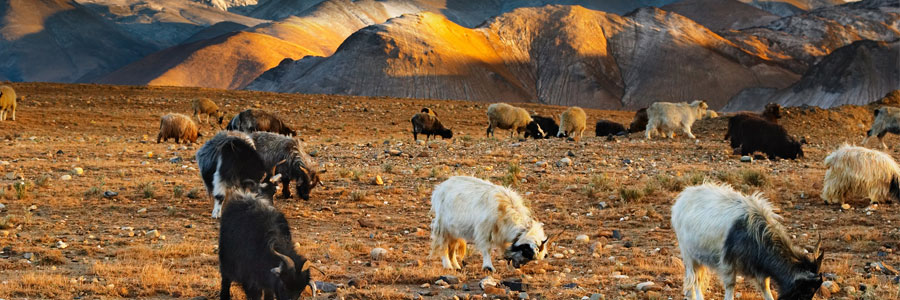
The Tibetan Plateau Development Project
The goal of this project was to increase the quality of life of poor villagers living on the Tibetan Plateau, and to conserve natural resources in the area. Four years of work on rangeland conservation, enterprise development and cultural heritage preservation were successfully completed in 2009. The major achievements of this program include increases in income for herders and farmers, the establishment of a rangeland co-management model, the resuscitation of the ancient Nixi pottery tradition, and the establishment of community-based ecotourism in Shangri-la. Other accomplishments include the restoration of cultural sites, books, and traditions, and, most importantly, the launch by the local governments of several pilot projects in other locations in western China. TPDP project activities were implemented in three counties: Diqing Prefecture, Yunnan Province and Hongyuan County of Sichuan, serving a total of 25,509 people, 45% of whom were women.
Natural Resource Management
-22 high altitude four-in-one (greenhouse + toilet + pig pen + digester) biogas were units installed in poor rural households in Sichuan and Yunnan. The units help lower carbon emissions that contribute to global warming, improve community sanitation conditions and reduce women’s labor burden.
-84 solar water heaters and two community water supply systems were installed in poor upstream communities, providing villagers with clean water, thereby improving public health.
-Villagers and government agencies mobilized to plant more than 6,000 willow tree saplings, covering an approximate area of 20,000 m2 to help reduce soil erosion and regulate the quantity and quality of water flow in a critical watershed.
Cultural Heritage Preservation
-Worked with the Diqing Prefecture Bureau of Cultural Management to host a seminar on indigenous traditional culture and development with official representation from the UNESCO Culture Sector and other guests.
-Publishedof a full-color, tri-lingual (Tibetan – English – Chinese) brochure, introducing TMI‘s cultural heritage preservation activities in Sichuan and Yunnan.
-Provided rural marketing support, promoted traditional artisanal craftsmanship and building critical market linkages for small, village-based, family-owned operations.
Enterprise Development
-Erected visitor signage and tourist facilities in the Baimang Mountain Nature Reserve, promoting environmental awareness in fragile mountain areas.
-Partnered with a community-based organic honey processor in Bazhu Village to develop effective supply-chain management.
-Strengthened yak meat processing method, creating a five-fold increase in product sales and generating an estimated 2.4 million Yuan (over US$ 350,000) in revenue for Hongyuan County.
-Trained local tour guides on the history, culture and production of Nixi black pottery
Trained village-based tourist service providers on hosting, and other tourism-related activities.
-Developed codes of conduct for ecotourism and nature tourism in national parks, promoting equitable, green and sustainable development at the community level.
-Facilitated partnership activities between village-based entrepreneurs and the Banyan Tree Hotel, an internationally renowned luxury line.
Our sub-grant program broadeeds the reach and depth of our core program. Sub-grants supported:
-Local NGOs to safeguard traditional Tibetan Zhani music, a unique two-string instrument facing cultural extinction.
-Roots & Shoots to integrate environmental education into the primary school curriculum in Hongyuan
-Publication of a book of proverbs compiled from remote farming and nomadic villages in western
-The establishment of the Hongyuan Women‘s Federation to improve female herders‘ access to health education and basic services in Anqu Township
-Training for local villagers in biodiversity monitoring and publication of a guidebook of alpine flowers, supporting environmentally responsible niche tourism in Shangri-la.
-

Conflict in Mountains Case Studies
The Mountain Institute recently completed two case studies concerned with conflict in mountain communities in Nepal and Peru. 1) “An Analysis of NGO Service Delivery Capacities in Nepal During Times of Conflict and Uncertanity,” and 2) “Private Sector and Local Community Relationships: the Role of PVOs and Local NGOs in Promoting Democracy, Conservation and Sustainability in Peru.”

